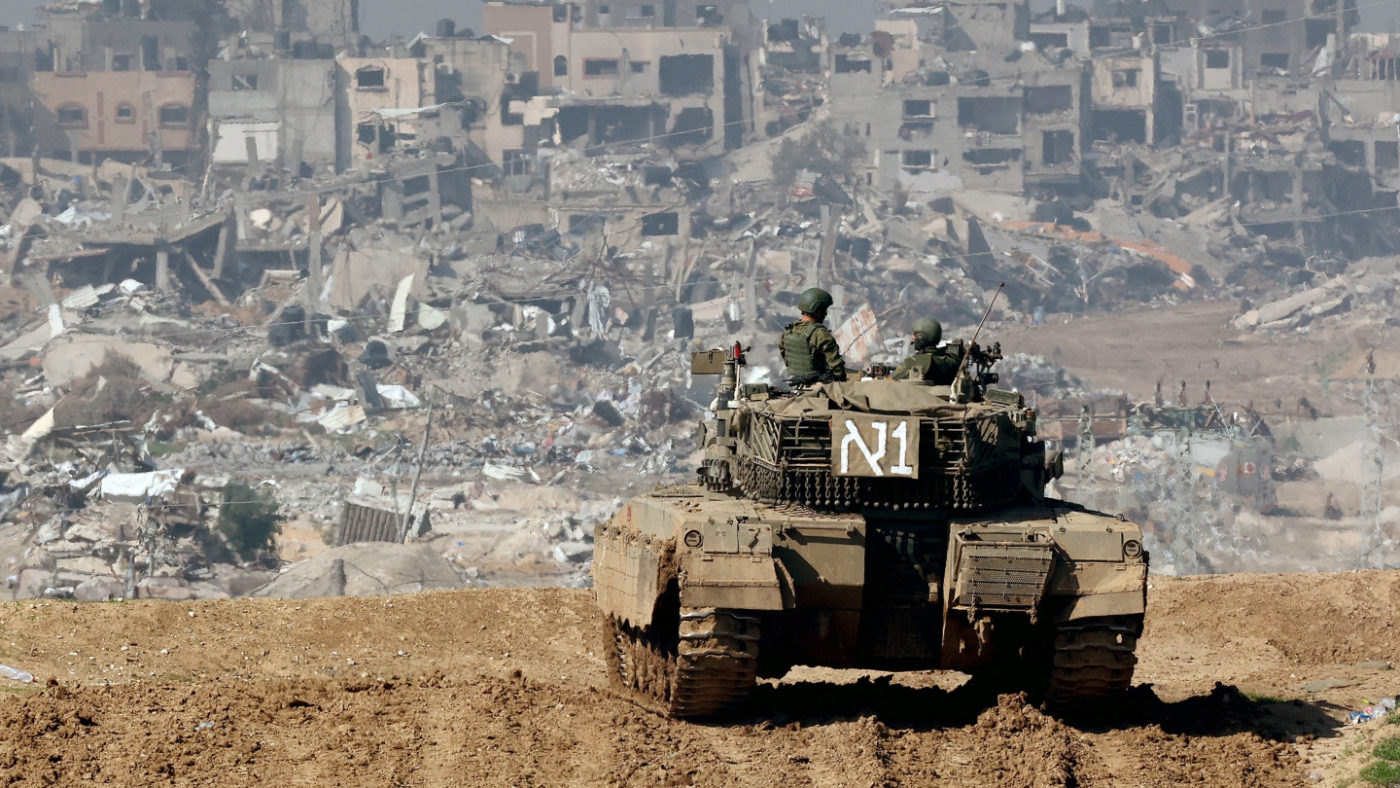Four unarmed Palestinian men are walking in the city of Khan Younis in the southern Gaza Strip surrounded by no one except the wreckage from Israeli bombardments. Seemingly searching for their homes or lost relatives, an explosion shatters the men’s brief respite from war.
Two of the men are wiped out. The third man, now hobbling away from the targeted site, is quickly eliminated by another blast. The fourth man falls to his knees and, in an instant, is blown to pieces by yet another airstrike.
This scene, reportedly occurring in February, of heinous brutality depicted in Israeli drone footage, was released by Al Jazeerain March to a firestorm of criticism against Israel’s actions in its war on Gaza.
A few weeks later, the Israeli newspaper Haaretz found the Israeli military had established “kill zones” where anyone who crosses these invisible boundaries is a target – confirming that the Israeli military isn’t distinguishing between combatants and civilians in stark violation of the laws of war.
“Establishing ‘kill zones’ in Gaza isn’t a new idea emerging in the current war, but rather a longstanding military tactic stemming back more than a decade ago”
The day after the report was published, an Israeli airstrike killed seven international aid workers in the Gaza Strip – again unleashing a tsunami of condemnation against Israel.
In February, the Israeli military admitted it fired at civilians trying to collect aid packages in northern Gaza – in which 112 Palestinians were killed and hundreds more injured during a horrific incident referred to as the ‘Flour Massacre’.
The army said the civilians were shot at because they “posed a threat to [forces]”. The incident in February is just one of many ‘Flour Massacres’. According to the Euro-Med Human Rights Monitor, Israeli soldiers have killed more than 500 Palestinians as they obtain vital humanitarian aid.
In December, Israeli troops allegedly executed 19 Palestinian civilian men just outside their apartment building in what the United Nations described as “a possible war crime”. Another report by the Euro-Med Human Rights Monitor found the Israeli army has executed dozens of elderly Palestinians in Gaza in direct shooting operations.
Most recently, an Israeli airstrike in northern Gaza killed three sons and four grandchildren of Hamas chief Ismail Haniyeh. The Israeli military – while not mentioning the grandchildren – described the three sons as Hamas military operatives and said they were targeted because they were going to “carry out terrorist activities in the central area of the Gaza Strip”.
They were reportedly on their way to a family celebration marking the first day of the Muslim holiday of Eid.
“Unless new information comes to light about some fighting function that they fulfilled and about a direct military advantage anticipated that was sufficiently weighty to somehow render the foreseeable death of children ‘proportionate’,” Eitan Diamond, a lawyer at Diakonia International Human Law Centre, wrote on social media, then the killing of Haniyeh’s children and grandchildren “seems to fall within the category of intentionally directing attacks against civilians not taking direct part in hostilities, a war crime”.
“The Israeli military traditionally has not observed a distinction between combatants and non-combatants. It’s often just as comfortable killing non-combatants as combatants”
Possible war crimes in Gaza
Several Israeli military and legal experts, speaking with TNA, have described Israeli soldiers’ violence against civilians throughout the war on Gaza as violating the laws of war, specifically when it comes to “kill zones”.
“It’s exceptionally illegal to kill every man, woman, and child, irrespective of their combat status, who happens to unknowingly be in a zone where they’re marked for death,” Middle East analyst Mouin Rabbani told TNA.
“The laws of war are very clear about these things. You can’t just unleash snipers at small children, the elderly, and unarmed men and women who are demonstrably not engaged in hostilities.”
Speaking to TNA on background, one legal expert cited several definitions of war crimes from the International Committee of the Red Cross, Amnesty International, and Article 8 of the Rome Statute of the International Criminal Court, in discussing whether the kill zones could be classified as war crimes.
“If the facts as reported are true then it looks like these are violations of international humanitarian law that have endangered (and killed) civilians, which would probably be a war crime,” the source said.
Shir Hever, a political economist and the military embargo coordinator at the Palestinian-led Boycott, Divestment, and Sanctions movement’s National Committee, identified numerous instances of Israeli soldiers’ actions on the ground in Gaza as constituting war crimes – including ‘kill zones’, the killing of World Central Kitchen staff, bombing Al-Ahli hospital, and striking a Palestinian civilian convoy fleeing southward.

